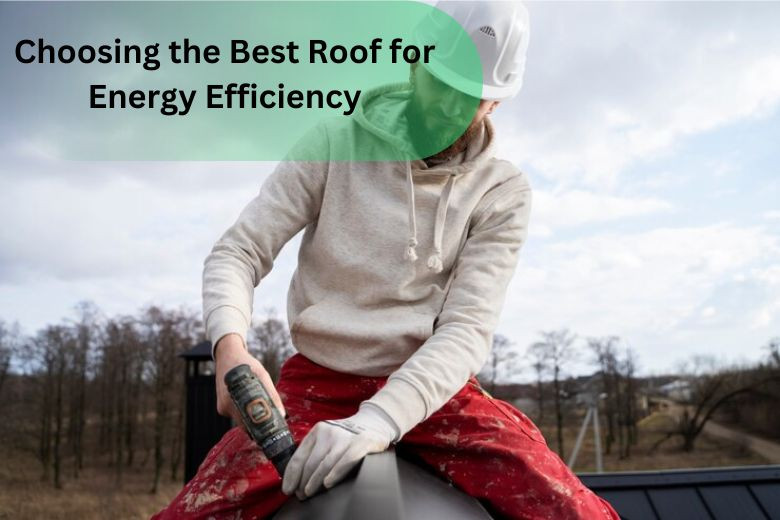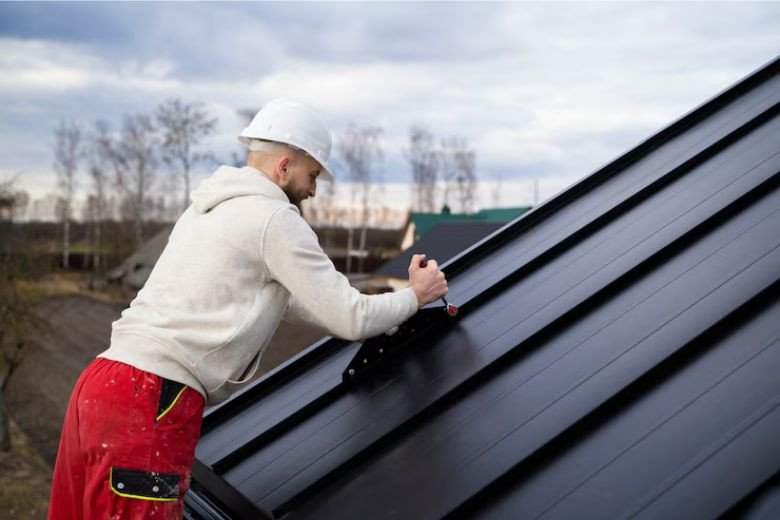Choosing the Best Roof for Energy Efficiency
Posted on August 27, 2024 by Admin

Where a comfortable, cost-efficient home is concerned, the choice of roofing material assumes prime importance with regard to energy efficiency. The best roof for energy efficiency may impact your overall heating and cooling bills, your home's comfort levels, and the environment. With the different options available at your fingertips, understanding which kind of roofing really brings forward benefits to save energy will help in making a more decisive choice.
Understanding Roof Energy Efficiency
Energy efficiency in roofing is defined as the ability of a roofing material either to reflect or to absorb heat. For example, if your roofing material efficiently reflects the sun's energy and minimizes the amount of heat it can absorb, this will definitely lower the amount of energy required to cool the building during summer. On the other hand, a well-insulated roof helps the building remain warmer during the cold season, thus enabling you to save some heating dollars. For this reason, the best roofing for energy efficiency will be one that combines these two features: the reflective and the insulating properties in roofing materials.
Reflective Roofing Materials
The reflectiveness of the material is one of the prime factors when choosing the best roof for energy efficiency. Reflective roofing materials would then be designed to reflect a huge portion of the sun's radiations away from your home, hence decreasing the amount of heat absorbed through the roofing, keeping indoor temperatures cool, with a corresponding drop in air-conditioning costs.

1. Metal Roofs
Metal roofing has significant reflective capability. Modern metal roofs do come with applied coatings that increase the reflectivity of the roofing, hence becoming a very conducive material for roofing where energy efficiency matters. They work very effectively in areas with a hot climate where reducing heat absorption is vital.
2. Cool Roofs
Cool roofs reflect more of the sun's rays and absorb less heat than a standard roof. Such roofing materials come in various forms, like reflective coatings, tiles, and shingles. Cool roofs help a lot in enhancing energy efficiency, improving residential and commercial building comfort.
Insulating Roofing Materials
Next to reflectivity, insulation is the second most important factor in choosing the best roofing system for energy efficiency. Large amounts of insulating roofing materials can help keep a constant indoor temperature by restraining the flow of heat between the interior of your home and outside elements.
1. Asphalt Shingles
Most of the modern asphalt shingles have improved insulating abilities. Some include extra layers in their makeup that provide better insulation, hence improving energy efficiency. Though less reflective compared to their metal and cool roofing counterparts, they still put up a good performance in terms of insulation.
2. Clay and Concrete Tiles
Owing to the density and thickness of the material, clay and concrete tiles work very well in insulation. They work to keep the house cooler in summer and warmer during winter; hence they are a good choice in so far as energy efficiency in roofs is concerned.
3. Green Roofs
Green roofs are essentially covered with vegetation and a growing medium. They are remarkably good at providing insulation and can significantly reduce both heating and cooling costs. The additional benefits offered by green roofs are improvement in air quality and stormwater management.
The Role of Roof Color
Other than the type of materials to be used for the roofing, its color is also a significant determinant of the best energy-efficient roofing. Lighter-colored roofing reflects more sun rays, and as such, allows lesser heat into your building compared to dark-colored roofs that absorb more heat. You will reduce the quantity of absorbed heat if you choose to have a lighter color, thereby increasing the energy efficiency in your home.
Must Read : The Future of Smart Home Electrical Systems
Other factors to consider
In making the perfect choice of a roof in attaining energy efficiency, consider the local climatic conditions and roofing materials' durability and maintenance requirements. All roofing materials have their own benefits which mean the perfect choice will depend on individual need and preference.
Faqs
-
1. What are some of the factors I should consider while choosing the best roof for energy efficiency?
While selecting the most energy-efficient roof, reflectivity of the material, insulation properties, color of the roof, and local climate are the major things to be kept in consideration. Reflective materials absorb less heat; on the other hand, insulating materials work on the principle to maintain an inside house temperature.
-
2. How do reflective roofing materials improve the energy efficiency of a building?
These materials work to reflect much of the sun off your home and out of it, thereby keeping temperatures inside the home much cooler. You can significantly reduce the need for air conditioning during the hot summer months, which results in saved energy costs.
-
3. What are some examples of reflective roofing materials?
Examples include reflective roofing materials such as metal roofs and cool roofs. Many metal roofs have already been pre-coated with a reflective material, and cool roofs are actually finished with materials that reflect much of the energy from the sun and absorb less heat than traditional material finishes.
-
4. How does insulating roofing material lead to energy efficiency?
Insulating roofing materials help with energy efficiency by reducing the level of heat transfer between the interior and exterior of your home. Clay tiles, concrete tiles, and some asphalt shingles are good at providing insulation, hence keeping your home comfortable throughout the year.
-
5. Will the color of my roof affect its energy efficiency?
Yes, it does. Lighter-colored roofs have a more reflective surface for the sun, while absorbing less heat to help keep your home cool. Darker roofs absorb more heat and raise the cost of cooling in warm climates.
Recent Post
- Top Plumbing Service Providers in Arizona, USA
- Top 10 Electrician Service Providers in Alabama, USA
- Top 20 Roof Repair Service Providers in Alabama, USA
- The Role of Roof Insulation in Energy Efficiency: Tips and Tricks
- Understanding Roof Damage from Wildlife and How to Prevent It
- How to Choose the Best Roofing Contractor for Emergency Repairs
- Roofing Maintenance for Historic Homes: Preserving Architectural Integrity
- The Importance of Proper Attic Ventilation for Roof Health
- How to Identify and Prevent Roof Mold and Mildew
- The Best Practices for Removing Snow from Your Roof